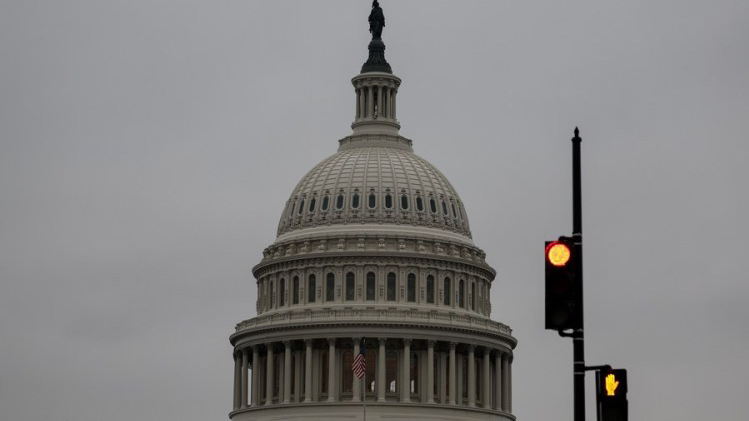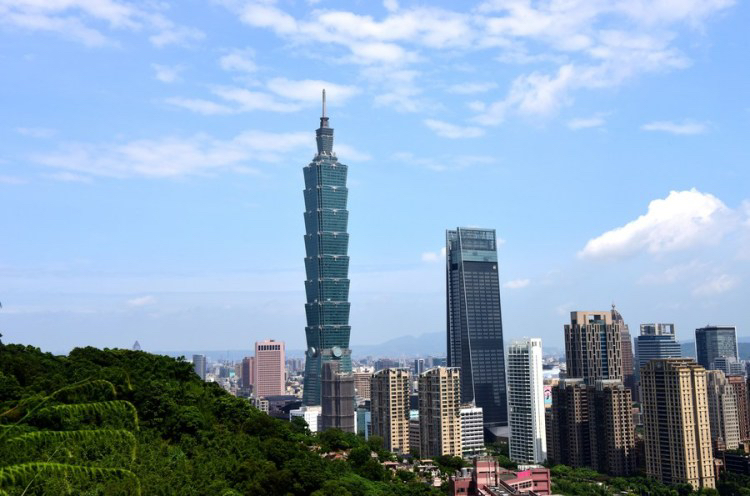
The U.S. Capitol building in Washington, D.C., the United States, January 19, 2023. /Xinhua
The U.S. Capitol building in Washington, D.C., the United States, January 19, 2023. /Xinhua
Editor's Note: Zhou Wenxing is assistant professor at School of International Studies, Nanjing University and former Asia Fellow at John F. Kennedy School, Harvard University. He writes extensively on comparative politics and international relations, with an emphasis on the Taiwan issue and China-U.S. relations. The article reflects the author's opinions, and not necessarily the views of CGTN.
The Joe Biden administration recently notified U.S. Congress of a new package of arms sale to the Taiwan region. This would be the 9th such sale since the Biden administration took office in January 2021. U.S. arms sales to island of Taiwan have particularly attracted high attention from all sides in the context of the intensified strategic competition between China and the U.S., the continued tensions across the Taiwan Straits and the ongoing Russia-Ukraine conflict.
In terms of the frequency of arms sales to Taiwan region, however, the Biden administration's approval nine times in two years has rarely been seen in recent memory. Even the former U.S. President Donald Trump approved only 11 sales in his four years in office. President Biden is very likely to become a president who would have most frequently sold weapons to Taiwan region in more than 40 years if the trend continues in the remaining two years of his term.
The sharp increase in the frequency of arms sales suggests the trend of normalizing the sale of U.S. weaponry to Taiwan region by "ensuring timely review of and response to request of Taiwan for defense articles and services" as stipulated in the National Defense Authorization Act for Fiscal Year 2022, which was signed into law by President Biden in December 2021. This is an important step that the U.S. has taken towards a changing Taiwan policy under the framework of strategic competition with China.
But what's even more crucial is the U.S. commitment to strengthening Taiwan region's so-called asymmetric warfare capabilities. Put differently, to improve Taiwan region's capabilities to resist the possible use of force by the Chinese mainland against the island of Taiwan.
Arming Taiwan region and making it a "porcupine," that is equipped with such modern defense weapons that could hardly be conquered, has therefore become a priority for some American political elites. Volcano anti-tank systems that were announced for sale to Taiwan region in December 2022 and munitions for F-16 fighter jets in March 2023 are good cases in point.

The Taipei 101 skyscraper in Taipei, southeast China's Taiwan, July 21, 2019. /Xinhua
The Taipei 101 skyscraper in Taipei, southeast China's Taiwan, July 21, 2019. /Xinhua
It is known to almost all that Taiwan region is part of China, and the Taiwan question is essentially China's internal affairs. However, the U.S. has been reluctant to "abandon" Taiwan region as its strategic tool to balance a rising China and hence maintain its hegemony. On the other hand, the U.S. has been adjusting its Taiwan policy to varying degrees in accordance with its demands for cooperation with China on major global strategic issues that are in the interests of America.
For example, in order to persuade China to align with the U.S. to resist then revisionist Soviet Union, then visiting U.S. National Security Advisor Henry Kissinger told Premier Zhou Enlai in July 1971 that the Taiwan question would be resolved within the near future once American troops were withdrawn from Taiwan region. But Americans' respect for China's core interests concerning the Taiwan affairs diminished dramatically with the collapse of the Soviet Union.
The Donald Trump administration's labeling of China as a "strategic competitor" provided the momentum for the U.S. to further change its existing policy towards Taiwan region. It remains a key question for the U.S. that how the strategic assets and values of Taiwan region as a "major non-NATO ally" could be fully exploited to compete with China.
In the firm belief that the Chinese mainland would use force against Taiwan region particularly as the Russia-Ukraine conflict escalated in late February 2022, the U.S. government has been trying to make Taiwan region another "Ukraine." It is under this scenario that the U.S. accelerated to promote regular arms sales to Taiwan region that are aimed at enhancing the latter's asymmetric defense capabilities.
But ironically, such moves by the U.S. are being viewed as provocative and fruitless. Their illegal intervention in the Taiwan question will no doubt further beg for harsher responses from China. Tensions across the Taiwan Strait have therefore escalated, and more uncertainties have been brought to regional stability and development.
As a result, American hegemony that is based mainly on a peaceful and stable Asia Pacific region will likely be undermined. The U.S. may prolong its status as a hegemon unless it learns how to behave as a benign great power rather than one that meddles with other nations' domestic issues without restraint.
(If you want to contribute and have specific expertise, please contact us at opinions@cgtn.com. Follow @thouse_opinions on Twitter to discover the latest commentaries in the CGTN Opinion Section.)